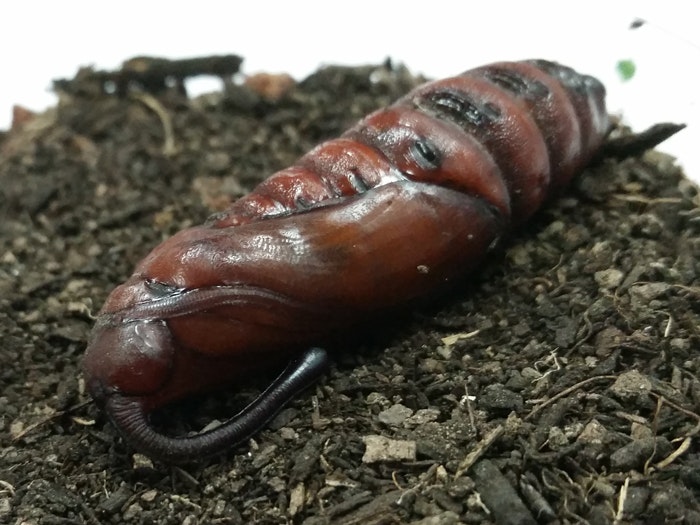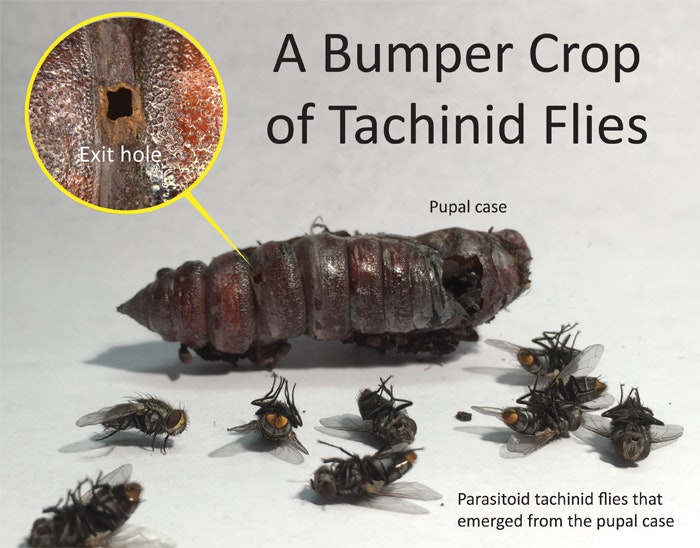Tobacco hornworm
Scientific name: Manduca sexta
Size: Approx. 80 mm long (mature caterpillar/larva)
Where found: In a Rohnert Park tomato garden

In the fall, a resident brought us a massive hornworm he had found on a tomato plant in his garden (see photo). Hornworms are the larval (caterpillar) stage of a moth with a wingspan of up to five inches. Despite their prodigious size, hornworms are so expertly camouflaged that they often go unnoticed (by humans). We fed our green giant for a few days, and it methodically munched its way through leaf after leaf of tomato foliage. A few days later, it decided that it had had enough, and began the process of pupation. We placed it in a screened cage with a few inches of garden soil—as hornworms prefer to pupate in private (underground). I placed the cage on a shelf in my office, hoping that in the spring, a massive moth would emerge!
The holidays passed, and one morning in February I was typing at my desk and heard a buzzing sound. I turned around, and was surprised to see several robust flies (10 of them, to be exact) buzzing inside the hornworm habitat. The hornworm’s pupal case was now at the surface of the soil, and had several small holes in it. What had happened to our poor hornworm?
Unbeknownst to us, the hornworm’s fate had been sealed before it arrived at our office. The mother of the robust buzzers in the cage (tachinid flies), had located the hidden hornworm whilst it was still in the garden and attached her eggs to it. Once the hornworm pupated, the fly eggs hatched, and the tiny fly larvae drilled into the hornworm pupa, where they slowly devoured it from the inside out. Once they had their fill, they chewed their way out of the now hollow shell so that they could pupate, emerge as winged adults, and startle me at my desk (see photo). Yikes!

Despite the gruesome end to this story, hornworms are pests of tomatoes, and this is an example of how parasitoids (in this case a tachinid fly) may help limit the prevalence of certain pests in nature and actually benefit humans as a form of biological control.
For more information about hornworms, and how to distinguish a tobacco hornworm from the similar tomato hornworm (Manduca quinquemaculata), please click here.
